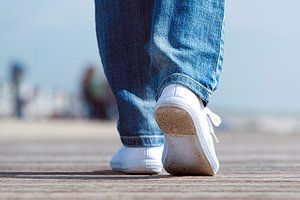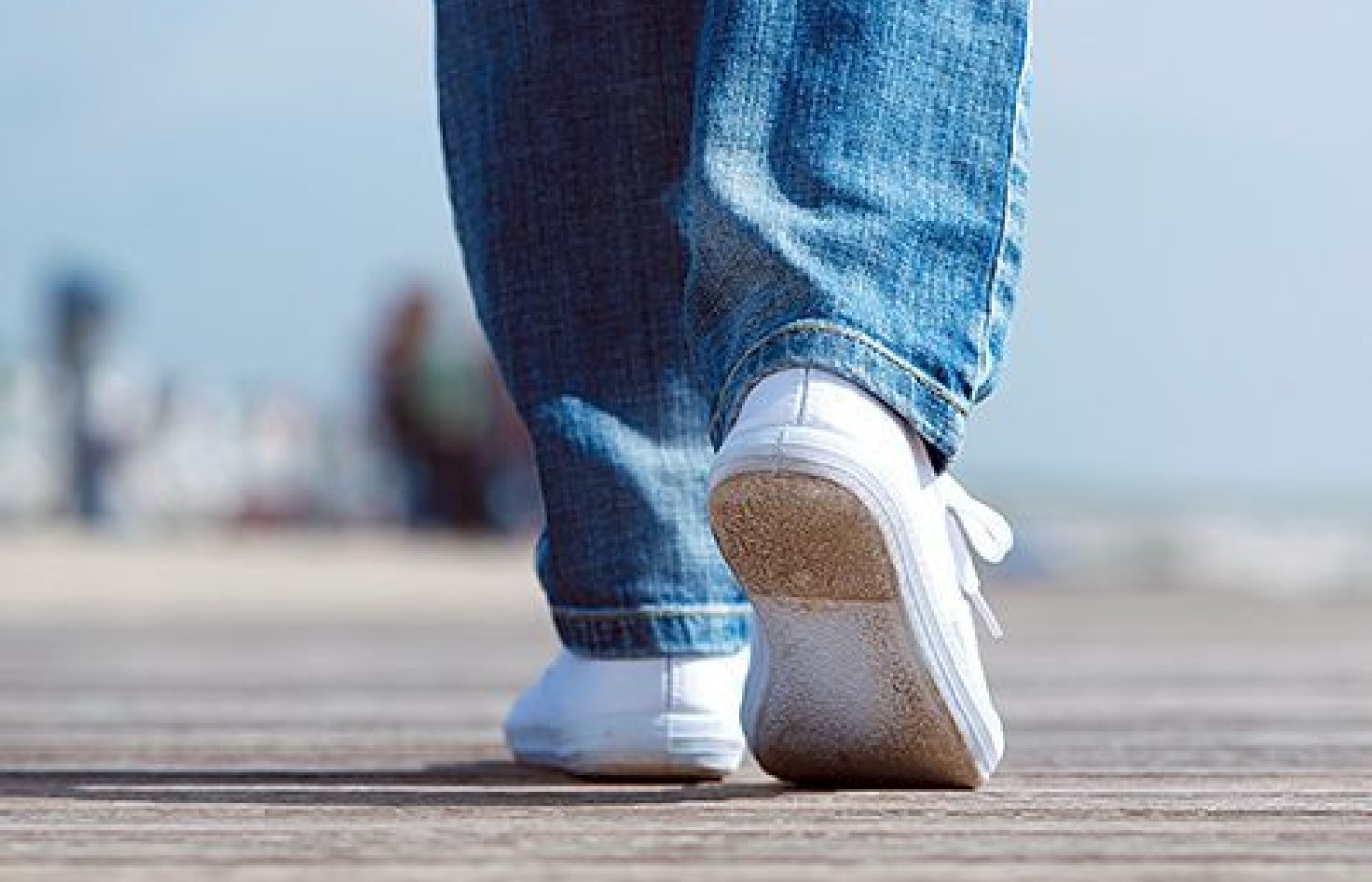Recent laws in New Jersey and California represent a disturbing trend that will negatively impact a practice’s ability to collect monies from patients, as well as expose them to significant penalties if the practice does not follow the mandatory guidelines to a T. Please be aware that a similar law may be coming to your state. The time to act is before the law is passed.
Risk Factors for Heel Problems
Heel pain and gait disability are common occurrences in adults, often the result of thinning heel pads and a lifetime of exposure to heel-strike shock. One condition experienced by many people is plantar fasciitis. The patient will usually describe a stabbing heel pain that spreads from the bottom of the inside of the foot. The pain is often worse in the morning, when getting out of bed. Surgery and injections for this condition are only rarely necessary, as conservative care has been found to be effective in the great majority of cases.1
Several studies have identified various risk factors that increase the likelihood for developing plantar fasciitis. Identification of these factors will help direct effective conservative care, and also provide guidance for preventive and self-care recommendations.
Structure for Support
The plantar fascia is the major structure that supports and maintains the arched alignment of the foot.2 This aponeurosis (sheet-like, fibrous membrane) is made of strong, yet flexible connective tissue that functions as a "bowstring" to hold up the medial longitudinal arch. Plantar fasciitis develops when repetitive weight-bearing stress irritates the tough connective tissues along the bottom of the foot, resulting in collagen degeneration.

When the biomechanical strain continues, the body's repair capacity is overwhelmed, and the ligaments begin to fail. It is this tear / repair process that causes the chronic, variable symptoms that can eventually become unbearable in some patients.
Risk Factors
Abnormal biomechanics. Excessive pronation has been identified as the most common biomechanical finding associated with plantar fasciitis, although a weight-bearing evaluation sometimes finds rigid supination.3 The flatter, hyperpronating foot overstretches the bowstring function of the plantar fascia, while the high-arched, rigid foot places excessive tension on the plantar aponeurosis. In either case, the combination of improper foot biomechanics and excessive strain causes the connective tissue to undergo collagen degeneration, which can be identified by areas of fibrotic thickening during palpation.
Foot subluxations. Using careful radiographic assessment, Kell revealed the presence of a posterior calcaneus subluxation in some cases of plantar fasciitis. Posterior to anterior (P-A) thrusts on the posterior calcaneus (using a table with a pelvic drop piece) produced symptom resolution and reduced the measured discrepancy.4
Brantingham found various areas of joint dysfunction in the tarsal and metatarsal joints in patients with plantar fasciitis.5 The navicular and first metatarsophalangeal joints are often involved, and an anterior talus is frequently identified.
Limited dorsiflexion. In a matched case-control study that eliminated the effects of pronation and controlled for several other variables, Riddle, et al., found that the risk of plantar fasciitis increases significantly as the range of ankle dorsiflexion decreases.6 These results support the theory that a short and tight Achilles tendon will limit ankle dorsiflexion and force the foot to compensate by pronating excessively.
Calf stretching has been recommended for many years, both as a treatment and a preventive procedure for plantar strain. This course of action now has significant scientific and clinical support.1,3,7
Weight-bearing stress. The case-control study mentioned above identified two additional risk factors that really are part of the same phenomenon. Subjects who reported that they spent the majority of their workday on their feet, and those who were obese, were more likely to develop plantar fasciitis. Both of these conditions increase the chronic tensile loading of the aponeurosis in comparison to sedentary workers and those with a normal body weight.
External Support
Many types of external support for the plantar fascia have been investigated, with mixed results. One group of frustrated researchers concluded, "It may be that the varying success of the different inserts, both prefabricated and custom orthoses, is directly related to their shock absorption characteristics."7 In a study that carefully measured the differences in strain on the plantar aponeurosis using various orthotics, another group found that,"to support the longitudinal arches of the foot effectively, the medial surface of the orthoses must stabilize the apex of the foot's arch."8
These studies highlight the characteristics of the best orthotic for treating and preventing plantar fasciitis: it will provide direct support for the medial longitudinal arch, and it will be made of a soft, viscoelastic material to cushion the weight-bearing stress on the aponeurosis.
One additional factor that I have found very useful for actively painful plantar fascia is to special-order a "heel spur correction," whether there is radiographic evidence of a spur or not.9 This modification is a "divot" in the surface of the material under the heel to spread pressure away from the irritated fascial insertion.
Finding the New Normal
Plantar fasciitis usually responds well to properly focused, conservative treatment. Several risk factors have been identified that must be taken into consideration in both the treatment and prevention phases of care. Custom-made orthotics help reduce these risk factors by limiting pronation, providing support for the medial longitudinal arch, and decreasing the amount of weight-bearing stress that occurs during standing and walking.
Normalizing joint mechanics through adjustments, increasing the flexibility of the Achilles tendon with frequent stretching, and maintaining a normal body mass are also very important aspects of successful conservative treatment of plantar fasciitis.10
References
- Davis PF, Severud E, Baxter DE. Painful heel syndrome: results of nonoperative treatment. Foot Ankle Int, 1994;15:531-535.
- Huang CK, Kitaoka HB, An KN, Chao EYS. Biomechanical evaluation of longitudinal arch stability. Foot Ankle, 1993;14:353-357.
- Kwong PK, Kay D, Voner RT, White MW. Plantar fasciitis: mechanics and pathomechanics of treatment. Clin Sports Med, 1988;7:119-126.
- Kell PM. A comparative radiologic examination for unresponsive plantar fasciitis. J Manip Physiol Ther, 1994;17:329-334.
- Brantingham JW. Examination and treatment of plantar fasciitis. Chiro Technique, 1992;4:75-82.
- Riddle DL, Pulisic M, Pidcoe P, Johnson RE. Risk factors for plantar fasciitis: a matched case-control study. J Bone Joint Surg, 2003;85A:872-877.
- Pfeffer G, Bacchetti P, Deland J, et al. Comparison of custom and prefabricated orthoses in the initial treatment of proximal plantar fasciitis. Foot Ankle Int, 1999;20:214-221.
- Kogler GF, Solomonidis SE, Paul JP. Biomechanics of longitudinal arch support mechanisms in foot orthoses and their effect on plantar aponeurosis strain. Clin Biomech, 1996; 11:243-252.
- Moroney PJ, O'Neill BJ, Khan-Bhambro K, et al. The conundrum of calcaneal spurs: do they matter? Foot Ankle Spec, 2013 [e-pub ahead of print].
- Lee HS, Choi YR, Kim SW, et al. Risk factors affecting chronic rupture of the plantar fascia. Foot Ankle Int, 2013 [e-pub ahead of print].



